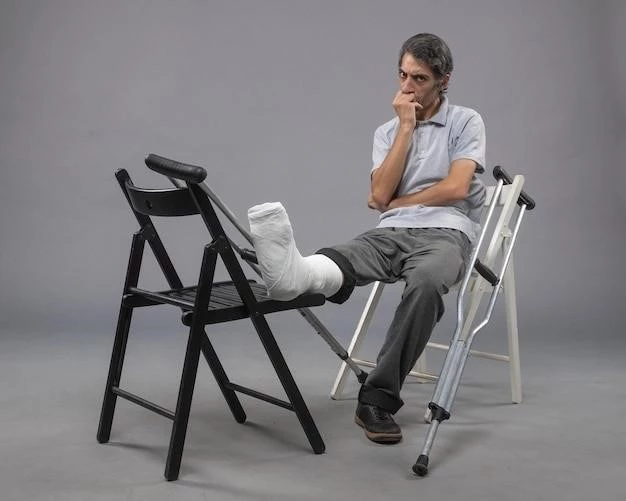Understanding Hemiplegia Syndrome
When dealing with a condition like Hemiplegia Syndrome, it’s crucial to understand the impact it has on individuals. Through this article, we will delve into the causes, symptoms, diagnosis, treatment, daily challenges, communication issues, and its link to epilepsy. Stay tuned for valuable insights!
Introduction to Hemiplegia Syndrome
Hemiplegia Syndrome is a neurological disorder characterized by paralysis on one side of the body. This condition is often caused by brain damage or a genetic mutation impacting motor function. Individuals with Hemiplegia may experience developmental delays, muscle weakness, and a range of challenges affecting daily life. Given the complexity of this condition, a multidisciplinary approach to management is essential.
Understanding the underlying causes and symptoms of Hemiplegia can help individuals and caregivers navigate the challenges associated with the condition. It is crucial to seek early diagnosis and intervention to optimize outcomes and quality of life. Treatment options such as physiotherapy and occupational therapy play a vital role in improving motor skills and mobility.

Living with Hemiplegia Syndrome requires patience, resilience, and support from healthcare professionals, caregivers, and the community. By raising awareness and promoting acceptance, individuals with Hemiplegia can lead fulfilling lives despite the obstacles they face. Through education and advocacy, we can enhance understanding and inclusivity for those living with this condition.
Causes of Hemiplegia Syndrome
Hemiplegia Syndrome can be attributed to various factors, primarily stemming from neurological issues affecting the brain’s motor control centers. One common cause of Hemiplegia is cerebral palsy, a group of disorders resulting from brain damage or abnormal brain development.
Another significant cause is a genetic mutation that interferes with the proper functioning of the nervous system, leading to motor impairments on one side of the body. These genetic abnormalities can manifest early in life, contributing to the development of Hemiplegia Syndrome.
Brain injuries, such as those resulting from trauma or stroke, can also trigger symptoms of Hemiplegia. These injuries disrupt the brain’s communication pathways, impacting muscle control and coordination on the affected side.
Understanding the root causes of Hemiplegia Syndrome is crucial for effective management and treatment. By identifying the underlying factors contributing to this condition, healthcare professionals can tailor interventions to address specific needs and improve the overall quality of life for individuals living with Hemiplegia.
Symptoms and Effects on Motor Function
The symptoms of Hemiplegia Syndrome are characterized by paralysis or severe weakness on one side of the body. Individuals may experience difficulty with motor skills, coordination, and balance as a result of this condition. Muscle stiffness and spasticity are common, affecting movements and mobility.
Hemiplegia can also lead to developmental delays in children, impacting their ability to reach physical milestones at the expected age. Muscle weakness on the affected side may result in challenges with daily activities such as walking, reaching, and grasping objects.
The effects of Hemiplegia on motor function can vary in severity, with some individuals experiencing mild limitations while others facing more pronounced impairments. It is essential to address these challenges through targeted therapies and interventions to promote better motor control and function.
By recognizing the symptoms and understanding how Hemiplegia impacts motor function, individuals and caregivers can work closely with healthcare professionals to create personalized treatment plans that address specific needs and enhance the overall quality of life for those living with this condition.
Diagnosis and Treatment
Diagnosing Hemiplegia Syndrome involves a comprehensive evaluation by healthcare professionals, including neurologists and pediatricians. Physical examinations, medical history reviews, and diagnostic tests such as MRI or CT scans are commonly used to assess the extent of brain damage or underlying neurological conditions.
Early diagnosis is crucial to initiate timely interventions and treatment strategies. Once diagnosed, a multidisciplinary approach combining physiotherapy, occupational therapy, and speech therapy may be recommended to address the diverse needs of individuals with Hemiplegia.
Physiotherapy focuses on improving muscle strength, coordination, and mobility through specialized exercises and techniques tailored to the individual’s capabilities. Occupational therapy aims to enhance daily living skills and promote independence in activities such as dressing, feeding, and self-care.
Speech therapy plays a vital role in addressing communication difficulties and speech impairments that may accompany Hemiplegia. Therapists work to improve oral motor function, language development, and swallowing abilities to enhance overall quality of life for individuals with this condition.
By combining diagnostic precision with targeted therapies, healthcare professionals can help individuals with Hemiplegia achieve their maximum potential and lead fulfilling lives. It is essential to collaborate closely with the healthcare team to ensure comprehensive care and support throughout the treatment journey.
Living with Hemiplegia Syndrome
Living with Hemiplegia Syndrome presents unique challenges that require resilience, adaptability, and support from various sources. Individuals with Hemiplegia may face obstacles in activities of daily living, mobility, and social interactions due to their condition.
It is essential for individuals with Hemiplegia, as well as their caregivers and families, to cultivate a supportive environment that promotes independence and empowerment. Accessing resources such as support groups, specialized education programs, and assistive devices can enhance quality of life and overall well-being.
Developing a care plan that addresses the specific needs and goals of the individual is crucial for effective management of Hemiplegia. This may include regular therapy sessions, adaptive equipment usage, and modifications to the living environment to improve accessibility and safety.
Emotional support and mental health care are also essential when living with a chronic condition like Hemiplegia. Seeking counseling, practicing coping strategies, and maintaining a positive outlook can help individuals navigate the emotional challenges associated with their condition.
By fostering a collaborative approach to care that involves healthcare professionals, caregivers, and the community, individuals with Hemiplegia can lead meaningful and fulfilling lives. Embracing acceptance, advocating for inclusivity, and celebrating achievements are essential aspects of living well with Hemiplegia Syndrome.
Speech Impairment and Communication Difficulties
Speech impairment and communication difficulties are common challenges faced by individuals with Hemiplegia Syndrome. The motor control issues that characterize this condition can affect the muscles involved in speech production, leading to articulation problems and reduced intelligibility.
Communication difficulties may also arise from cognitive impairments or language processing deficits associated with Hemiplegia. These challenges can manifest as expressive or receptive language delays, making it challenging for individuals to effectively convey their thoughts and understand others.
Speech therapy plays a crucial role in addressing speech and communication issues in individuals with Hemiplegia. Speech therapists utilize a range of techniques, exercises, and augmentative communication strategies to improve speech clarity, language skills, and overall communication effectiveness.
In addition to formal therapy sessions, incorporating communication-enhancing activities into daily routines can further support individuals with Hemiplegia in developing and refining their communication skills. Encouraging social interactions, practicing active listening, and utilizing visual aids can facilitate effective communication.
It is essential for individuals with Hemiplegia, along with their caregivers and healthcare providers, to approach speech therapy and communication interventions with patience, consistency, and a positive attitude. By working together to address speech and language challenges, individuals with Hemiplegia can enhance their ability to express themselves and engage meaningfully with others.
Epilepsy as a Common Co-Occurring Condition
Epilepsy is a prevalent co-occurring condition often linked to Hemiplegia Syndrome. Individuals with Hemiplegia may have an increased risk of developing epilepsy due to underlying brain abnormalities or structural changes that can predispose them to seizures.
Seizures in individuals with Hemiplegia and epilepsy can present in various forms, including focal seizures that affect specific areas of the brain. These seizures may further impact motor function, cognition, and overall quality of life for individuals already managing the challenges of Hemiplegia.
Diagnosing and managing epilepsy in individuals with Hemiplegia requires close collaboration between neurologists, epileptologists, and other healthcare professionals. Monitoring seizure activity, identifying triggers, and implementing appropriate antiepileptic medications are essential components of epilepsy management in this population.
In addition to medical treatments, lifestyle modifications such as maintaining a healthy sleep schedule, managing stress levels, and adhering to medication regimens can help reduce seizure frequency and severity in individuals with both Hemiplegia and epilepsy.
Education and support for individuals with Hemiplegia and epilepsy, as well as their caregivers, are crucial in navigating the challenges associated with managing both conditions simultaneously. By fostering open communication, understanding potential seizure risks, and promoting a safe and supportive environment, individuals can effectively manage epilepsy while addressing the complexities of Hemiplegia Syndrome.
